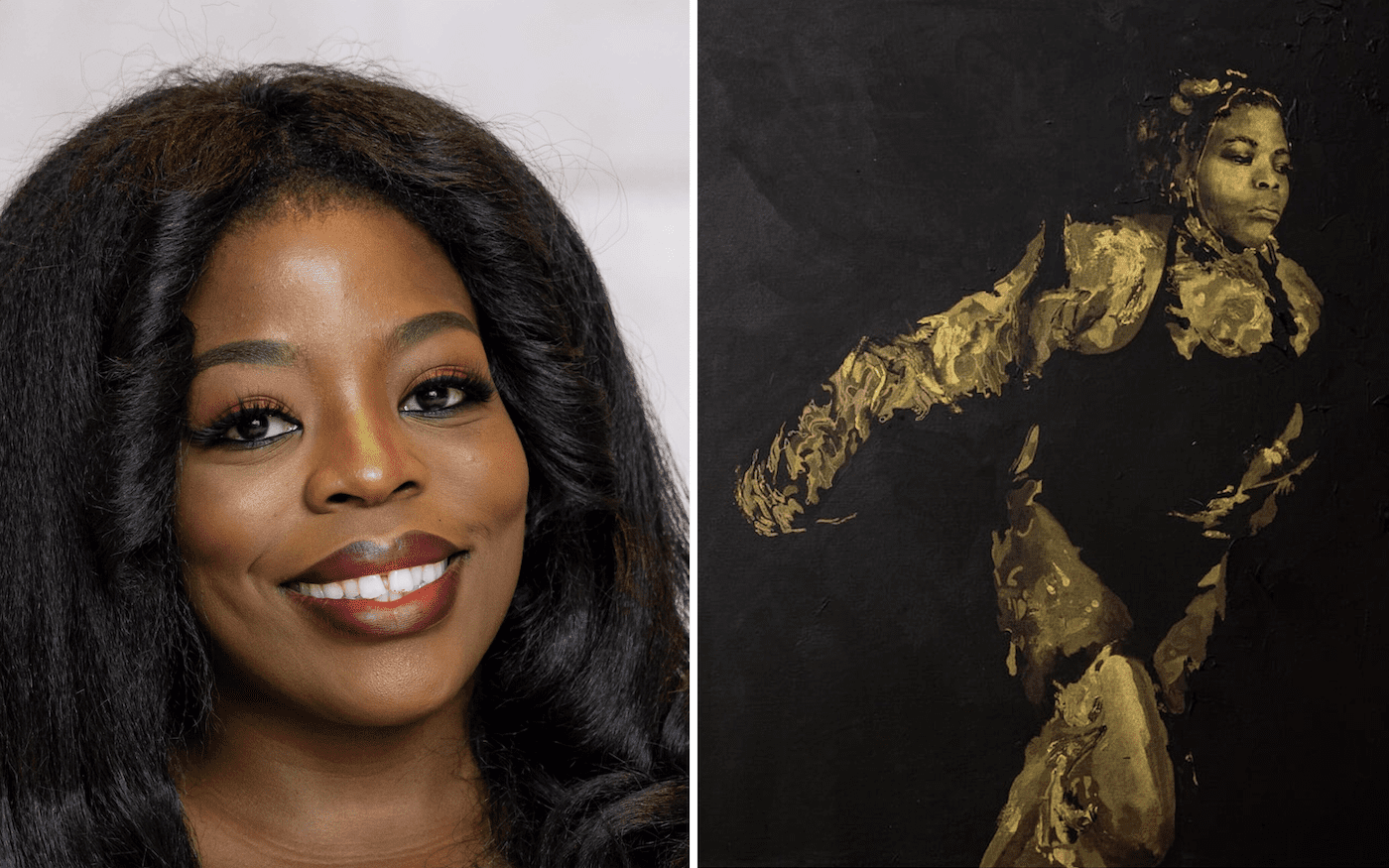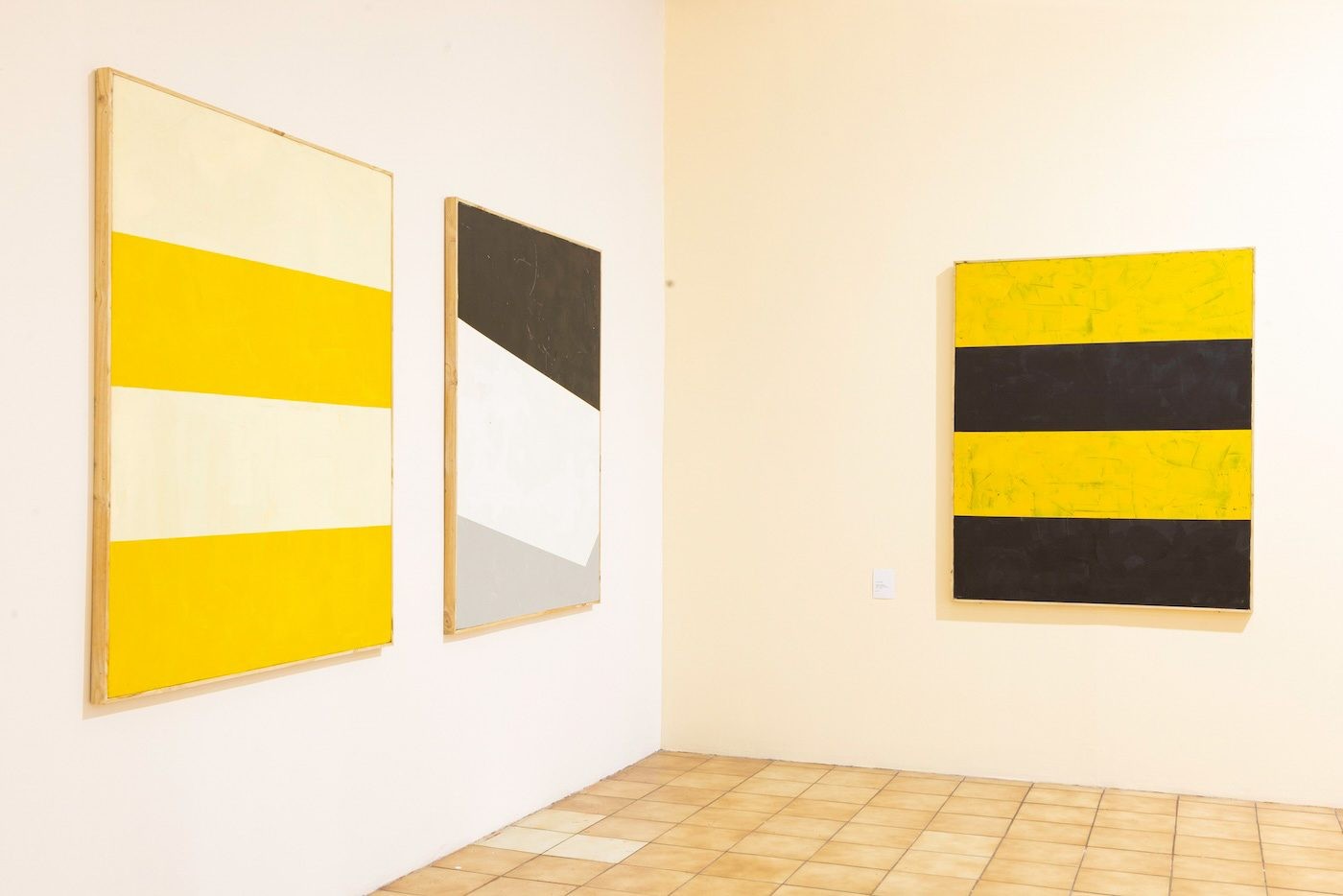Jennifer Packer: Confronting the Complex, the Ugly, and the Forbidden

23 November 2021
Magazine C& Magazine
Words Nan Collymore
6 min read
The US painter uses the symbolism of flowers to remember violent losses within the Black community and create tender moments that embody the senses.
“All things are full of weariness: a man cannot utter it: the eye is not satisfied with seeing, not the ear filled with hearing.” Ecclesiastes 1:8
How do we measure what the eye can see, or how it perceives its surroundings? And how do we manage our desires against another’s reality or constructed imaginary? These questions are prompted for the viewer throughout Jennifer Packer’s exhibition, The Eye Is Not Satisfied With Seeing, at the Whitney Museum in New York.
The soft blurring lines and tender strokes of color in Packer’s paintings are a testament to her ability and her eye for recording Black life. The oil paint sits lusciously on canvas while the colors blend with each other in an almost casual way. Her visual representations of Blackness are soft and intimate. She portrays the gentle and the raw, in sometimes framed and sometimes naked canvases, playing with the formal training of her Yale art education. These are vignettes, the slices of life that are the tesserae we construct to build our complicated, layered lives. It’s a narrative structure reminiscent of those used in a Toni Morrison novel or a Cade Bambara poem.
<div class="imwrap"><div class="row">
<div class="col-lg-12 col-md-12 col-sm-12 col-xs-12 imagecont">
Jennifer Packer, A Lesson in Longing, 2021. Courtesy the artist.
There is an easygoing layout to the space, moving around rooms with the artist’s recurring concepts and subjects. The room that is filled with what might be vanitas, but are also monuments to the dead, richly articulates how flowers can be expressive of a slew of psychological instances. Hold (2017) has a mostly muted palette scattered with brightly colored but dying petals. Here Packer seems to be referencing Saidiya Hartman’s book Lose Your Mother: A Journey Along the Atlantic Slave Route (Farrar, Straus & Giroux, 2007). The painting’s title carries with it the violence of the transatlantic crossing, subtly conveying to us the conflation of death and suffering with the vibrancy of the social and sociality. There is the sense that holding and being held is one of the ways in which we resist – by loving the self and Blackness, we are engaging in “the untiring practice of trying to live when you were never meant to survive.” Packer’s works are portals to interrogating how flowers are used and what meaning we attribute to them. They act as a way to remember violent losses within the Black community and as tender moments that embody the senses, ways of holding and being immersed in the love of small living things.
In an essay in the forthcoming book (Nothing but) Flowers (ArtBook, 2021), Helen Molesworth muses on her love of “still life”:
The artist Lari Pittman once told me that the decorative is a way of managing the great barbarity of the world, a means to keep the radical contingency and cruel unknowability of what is going to happen next at bay. This means that the decorative is a strategy against violence, and in that regard it’s no mistake that the decorative had long been the province of the historically disenfranchised – women, servants, queers – charged with the tasks of keeping house and maintaining culture.
I think Packer’s work points to the deep and cruel knowability of the violence propagated against Black life. The flowers are a representation of the embodied and immanent terror that we have faced and continue to face daily.
<div class="imwrap"><div class="row">
<div class="col-lg-12 col-md-12 col-sm-12 col-xs-12 imagecont">
Jennifer Packer, Blessed Are Those Who Mourn (Breonna! Breonna!), 2021. Courtesy the artist.
The exhibition contains recent work as well as paintings from the early 2010s, like Fire Next Time, a wide megalographydrenched in warm and fiery hues that echoes what James Baldwin was proposing in his urgent set of essays of the same name. The two notable pieces of work that speak to the current political urgency of Black life in the US are Blessed Are Those Who Mourn (Breonna! Breonna!) and Say Her Name. The omniscient, spectral threat that looms over the fragile Black body is present in the former. The way the light captures the ordinary, the many layers of the everyday, reminders of how we traverse cultural difference in the ways we choose to live. Many of Packer’s subjects are her friends, other artists whom she paints in repose, calm and open. Her attention to stillness and affect in each of those portraits tells us a little bit about each one of their inner lives.
Say Her Name (2017) vividly recalls the institutionally unacknowledged taking of Sandra Bland’s life, the egregious and public way that her life was stolen, through the attempt of a floral arrangement to commemorate that life somehow. The painted flowers are a way to mourn the dead, a way to symbolize the missing, the captured, the broken. But flowers also symbolize the everyday, a charting of the slow movement of time and how our embodied tethering to the temporal contains within it our pasts, our present, and our futures.
<div class="imwrap"><div class="row"><div class="col-lg-7 col-md-7 col-sm-7 col-xs-12 imagecont">
Jennifer Packer, Say Her Name, 2017. Courtesy the artist.
The interwoven elements of domesticity throughout the exhibition – bodies reclined, seated, at ease, flowers, and gestures of the everyday – bring us closer to the subjects. In a time where activists and voices on Black Twitter vehemently oppose the overuse or titillation of Black death, Packer treats her sitters (both living and dead) to this understanding of the fragility of life, of Black life. Her sensitivity to the interior lives of Black people coupled with her extraordinary skill as a painter and visual chronicler is a beautiful combination and shows someone unafraid of confronting the complex, the ugly, and the forbidden.
Jennifer Packer,The Eye Is Not Satisfied With Seeing continues at the Whitney Museum in New York until 12 April 2022.
Nan Collymore is a writer and an inter-disciplinary artist. She is interested in the body and land, and how the two co-exist. Her work is an attempt at creating a language that re-imagines the body as land and as a corporeal topography. She is the founder of small publishing house L’Habillement and lives in New York.
Read more from

Rest in/as Freedom: kiarita and Black Politics of Liberation

Modupeola Fadugba Wins The Norval Sovereign African Art Prize 2025

